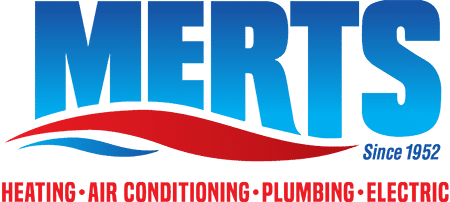Some people may be wondering why all the publicity these days about indoor air quality (IAQ). After all, it’s not something many of us heard about when we were growing up in Illinois or Northwest Indiana. There are three basic reasons why things have changed:
- Science has improved. The experts are better able to identify pollutants, and more is known about the health problems they cause.
- More time is spent indoors. Studies show Americans spend, on average, 90% of their time indoors. This limits exposure to fresh air. People are breathing recycled air all the time.
- Construction techniques have changed. In the never-ending quest for energy efficiency, homes and buildings are built much tighter to save money on utility bills. This limits ventilation to disperse the indoor pollutants and the indoor air quality gets worse.
Sources of indoor pollution
The list of unhealthy pollutants is very long, but these are some of the leading concerns:
- Radon—This is a radioactive gas that forms in the soil. It can enter the house through walls and floors. Radon is the leading cause of lung cancer among non-smokers.
- Secondhand smoke—By now, we should all be well aware of the danger from tobacco products. If you are tempted to smoke inside the house remember this: Children are especially vulnerable to secondhand smoke. It makes asthma symptoms worse and has been linked to an increased risk in Sudden Infant Death Syndrome (SIDS).
- Volatile organic compounds—Also known as VOCs, they come from a variety of sources, most notably paints, varnishes, building materials and home furnishings. They irritate the eyes, nose and throat while damaging the liver, kidneys, and central nervous system. Some can cause cancer.
- Combustion pollution—This is gas or particles that come from burning, including carbon monoxide and nitrogen dioxide. The level of pollution depends on the fuel and how well the device is maintained and vented.
Improving indoor air quality
You don’t have to just resign yourself to having poor/unhealthy indoor air quality. Here are three proven strategies to fight back:
- Improve filtration & purification. Start by changing your current filters regularly. Additionally, Merts offers multiple advanced filtration options to remove more pollutants from the air. There are also air purifiers you can add to your HVAC system that kill organisms in the air.
- Assure proper humidity levels. Air that’s too moist makes it easier for mold and other organisms to grow. When it’s too dry in your Illinois or Northwest Indiana home, it’s easier for viruses to spread. Use humidifiers and dehumidifiers as needed to keep indoor humidity between 30 and 50 percent.
- Get more fresh air with improved ventilation. This helps reduce the indoor pollution level. When weather permits, open your windows and doors. Make sure to use kitchen and bathroom fans that exhaust air to the outside.
Merts is ready to help
If you are concerned about the indoor air quality in your home, or just want to know more about IAQ options, call Merts Heating & Air Conditioning. Be sure to like and follow us on Facebook and Twitter for more great information.

